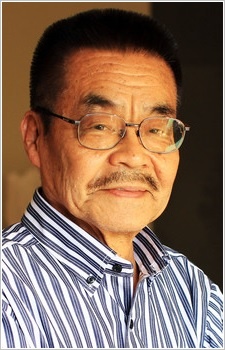
Yoshihiro Tatsumi

Mangaography


21 no Shimon
Story & Art
33 no Ashiato
Story & Art
Abaraya Denka
Story & Art
Bokutou-sensei
Story & Art
Daihakken
Story & Art
Daihakkutsu
Story & Art
Gekiga Hyouryuu
Story & Art
Gekiga Yose: Shibahama
Story & Art
Jigoku no Gundan
Story & Art
Kaika no Oni
Story & Art

Kieta Kyoukoku
Story & Art
Kodomojima
Story & Art
Kuroi Fubuki
Story & Art
Nanatsu no Kao
Story & Art
Pikadon-sensei
Story & Art
Tantei Book: Kage
Story & Art
Tatsumi Yoshihiro Kessakusen
Story & Art
Tetsuwan Genta
Story & Art
Yami ni Warau Otoko
Story & Art
Yukai na Hyouryuuki
StoryAbout
Died: March 7, 2015 (aged 79) Birth place: Osaka, Osaka Prefecture, Japan In the late 1950s, Yoshihiro Tatsumi began using the visual language of manga to tell gritty, literary stories about the private lives of everyday people. He has been called "the grandfather of Japanese alternative comics." Recently, his works have been seeing a resurgence of popularity, and he has been published in many languages. Tatsumi is widely credited with starting the gekiga (劇画, "dramatic pictures") style of alternative comics in Japan, having allegedly coined the term in 1957. He has thus influenced comic artists around the world. Gekiga is a more serious and realistic style than that of manga, which at the time was aimed toward children. The mainstream publications out of Tokyo produced the manga style, but the main support for the gekiga alternative comic style were the lending libraries out of Osaka. Over time, those who grew up reading manga wanted something more adult, and gekiga filled that need. The 1960s generation of Japanese youth became known as the Manga Generation; it was a sign of rebellion, and gekiga comics were central to that, including political movements espoused by the young. Eventually, the style had grown in popularity to the point that it influenced people like Osamu Tezuka (who was iconic of the mainstream manga style). This acceptance of varied styles in manga engendered the period called The Golden Age of Manga, which extended from the 1970s into the 1980s. Today, with the development of new schools of alternative comics in Japan, the influence of gekiga is declining, but it still appears, mostly in seinen comics. (Source: Wikipedia, Toronto Star)